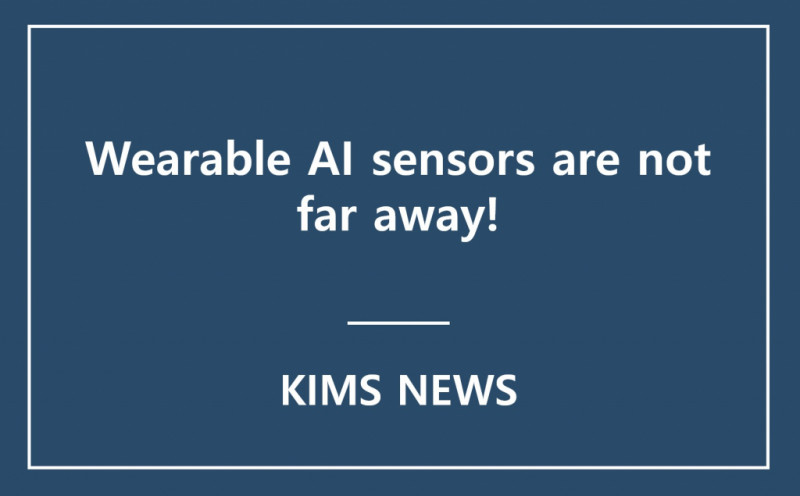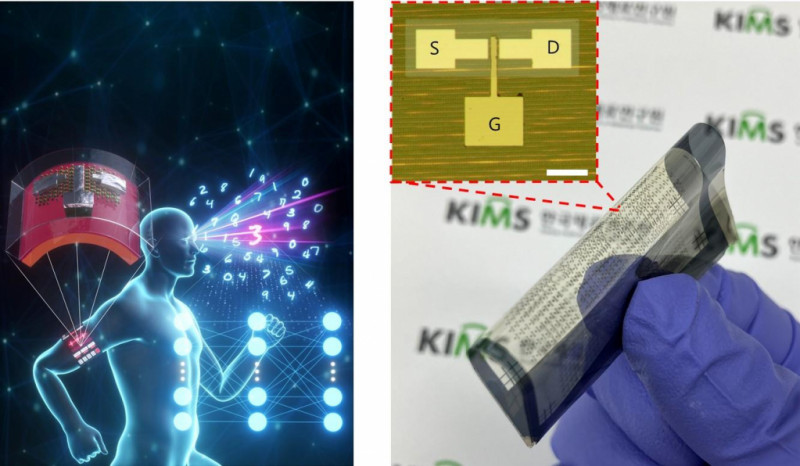R&D | KIMS developed the world's first next-generation wearable edge neuromorphic computing semiconductor device
Page info
Date23-06-27 11:21 Hit255Link
Contents
Wearable AI sensors are not far away! |
A research team led by Dr. Yong-hun Kim succeeded in creating the world’s first neuromorphic semiconductor devices with high integration and high flexibility by applying lithium-ion thin films to transparent flexible substrates. The researchers are in the Department of Energy & Electronic Materials at the Korea Institute of Materials Science (KIMS), a government-funded research institute under the Ministry of Science and ICT.
To develop a next-generation artificial intelligence semiconductor device with high integration and high flexibility, ultra-thin lithium-ion on a flexible substrate, Colorless Polyimide, is grafted with a two-dimensional nanomaterial synthesized at low temperature by plasma chemical vapor deposition. The research team confirmed that it showed a high handwriting pattern recognition rate of 95% without any noticeable performance degradation due to conducting a flexibility test with a curvature radius of 10 to 30 millimeters (mm) and repeated bending and unfolding 700 times.
Until now, most artificial intelligence semiconductor devices have been fabricated based on hard silicon substrates, and there has been a limit to making synaptic semiconductor devices that are mechanically flexible and highly reliable in the form of wearables. Through the lithium-ion ultra-thin filming process and the synthesis of two-dimensional nanomaterials at a low temperature of 300°C or less, which were carried out in previous research, the research team was able to develop a highly integrated, highly flexible artificial intelligence semiconductor device on a highly flexible substrate.
The research team's next-generation high-integration, high-flexibility neuromorphic semiconductor device technology does not require CPU and memory, which are von Neumann-type information processing devices and information storage devices, respectively, and can simultaneously process and store information with low power. It can be a crucial element for wearable low-power intelligent sensors and edge computing.
Dr. Yong-hun Kim, the senior researcher, said, “If this technology is commercialized, it is expected to solve the processing delays of big data processing among wearable IoT devices. The technology can be applied to various fields, including wearable edge computing and low-power wearable AI devices such as new types of AI haptic and vision sensors.”
The Major Project of KIMS funded this research under the Ministry of Science and ICT and Material Innovation Leading Project of the National Research Foundation of Korea. It was published on March 24th in the March issue of Small Methods (IF: 15.367/ Byeong-jin Park and Seung-kwon Hwang, the co-first authors and student researcher), a world-renowned academic journal published by Wiley.


